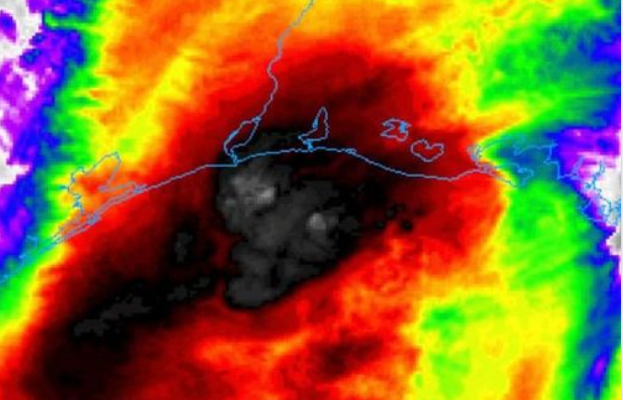 Parler
Parler Gab
Gab
Researchers studied space- and ground-based data to discover HFR waves
The researchers studied 25 years of space- and ground-based data to discover the HFR waves. "The very existence of HFR modes and their origin is a true mystery and may allude to exciting physics at play. It has the potential to shed insight on the otherwise unobservable interior of the Sun," said Shravan Hanasoge, the paper's co-author and astrophysicist at NYU Abu Dhabi's Center for Space Science. The study was directed by researchers from NYU Abu Dhabi's Center for Space Science in cooperation with the Tata Institute of Fundamental Research and NYU. Scientists originally thought that acoustic solar waves form near the Sun's surface, thanks to the Coriolis effect wherein points on a rotating sphere's equator seem to move quicker than points on its poles. The Coriolis effect is an apparent effect created by a rotating frame of reference. It happens when an object moving along a straight way is seen from a non-fixed frame of reference. Addressing the shortcomings in their knowledge might help the researchers gain a better understanding of the Sun's interior in addition to getting a better sense of how the Sun affects Earth and other planets in the solar system. It could also provide insight into the same kind of high-frequency wave known as the Rossby waves, which had been seen crossing Earth's oceans four times faster than current models can explain. Astronomers examine acoustic waves like these for the reason that we are still a long way from building technology capable of peeking deep into the Sun's interior.NASA, ESA launch solar probes
In 2018, the National Aeronautics and Space Administration (NASA) launched the Parker Solar Probe, which was named after the late solar physicist Eugene Parker from Florida's space coast. During the course of its seven-year mission, the Parker Solar Probe will move closer to the Sun than any other spacecraft in history. It has already broken speed records in just four years, traveling at a maximum speed of 430,000 mph. It has also done a series of astonishing discoveries about solar winds, high-energy particles and much more. In February 2020, the European Space Agency (ESA) launched the Solar Orbiter probe, which the agency created to study space weather; the heliosphere or the protective plasma bubble that encloses our solar system; and the Sun's poles, a mysterious area that has never been fully studied. Exactly six months after it was launched, the Solar Orbiter was able to take a closer photo of the Sun. The particular image showed the presence of small solar flares named campfires, which could help explain why the Sun's corona – the outermost layer of the Sun's atmosphere – is hotter than its surface. The discoveries these probes make could aid researchers in better foreseeing catastrophic space weather and comprehending how the Sun's cycles affect physical procedures here on Earth. Follow Space.news to learn more about the Sun. Watch the video below to know more about massive solar flares and Sun anomalies. This video is from the Space Anomalies channel on Brighteon.com.More related stories:
Discovery: The sun's magnetic waves react to sound. Solar telescope offers unprecedented glimpse into the Sun. Sun erupting non-stop this month, giant explosions seen from its far side. Sources include: WND.com WIONews.com LiveScience.com Byjus.com News.Yahoo.com Brighteon.comThey are screwing with the weather maps: SUN is BAD!
By News Editors // Share
Qatari study finds natural immunity is 97% EFFECTIVE against severe COVID even after 14 months
By Ramon Tomey // Share
Curcumin found to stop cancer cell growth
By Zoey Sky // Share
Governments continue to obscure COVID-19 vaccine data amid rising concerns over excess deaths
By patricklewis // Share
Tech giant Microsoft backs EXTINCTION with its support of carbon capture programs
By ramontomeydw // Share
Germany to resume arms exports to Israel despite repeated ceasefire violations
By isabelle // Share










